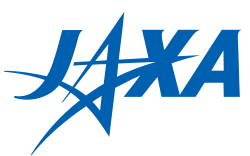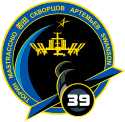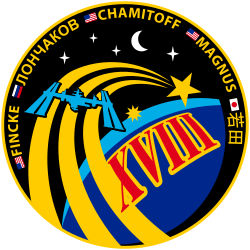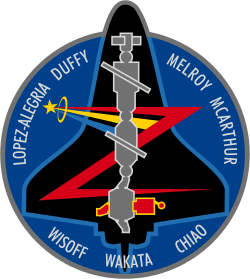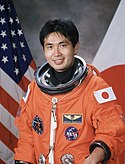Kōichi Wakata
| Kōichi Wakata | |
|---|---|
 | |
| Land | |
| Organisation | |
| ausgewählt | 28. April 1992 (14. NASA-Gruppe) |
| Einsätze | 5 Raumflüge |
| Start des ersten Raumflugs | 11. Januar 1996 |
| Landung des letzten Raumflugs | 12. März 2023 |
| Zeit im Weltraum | 504d 18h 32min |
| EVA-Einsätze | 2 |
| EVA-Gesamtdauer | 14h 2min |
| Raumflüge | |
| |
Kōichi Wakata (jap. 若田 光一, Wakata Kōichi; * 1. August 1963 in Ōmiya (heute: Kita-ku, Saitama), Japan) ist ein japanischer Astronaut und Raumfahrtfunktionär.
Ausbildung
Kōichi Wakata erwarb in seiner Alma Mater, der Universität Kyūshū, 1987 einen Bachelor in Luftfahrttechnik, 1989 einen Master in angewandter Mechanik und wurde 2004 in Luft- und Raumfahrttechnik promoviert.
1989 kam Wakata als Ingenieur zu Japan Airlines (JAL).
Raumfahrt
Auswahl und Training
Im Juni 1992 wurde er als Astronautenanwärter von der NASDA ausgewählt und im August 1992 an das Johnson Space Center geschickt. Nach seiner Ausbildung zum Missionsspezialisten wurde er in verschiedenen Bereichen bei der NASA eingesetzt.
Raumflug STS-72
Am 11. Januar 1996 flog er als Missionsspezialist mit dem Space Shuttle Endeavour zum ersten Mal ins All. Die Mannschaft fing die zehn Monate zuvor gestartete japanische Plattform Space Flyer Unit ein und setzte für zwei Tage die Plattform OAST aus. Bei zwei Weltraumausstiegen wurden Montagetechniken simuliert, um Erfahrungen für die künftige Internationale Raumstation zu sammeln. Insgesamt war Wakata dabei knapp 9 Tage im Weltraum.
Raumflug STS-92
Am 11. Oktober 2000 flog Wakata als Missionsspezialist mit der Raumfähre Discovery zur Internationalen Raumstation. Mit an Bord war das Gitterstrukturelement Z1 und der Pressurized Mating Adapter PMA-3. Wakata bediente bei der Montage den Roboterarm der Raumfähre. Die Mission dauerte insgesamt annähernd dreizehn Tage.
ISS-Expeditionen 18/19/20
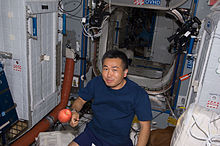
Im Februar 2007 wurde Wakata als Bordingenieur für die ISS-Expedition 18 nominiert, die damals noch für Sommer 2008 geplant war.[1] Durch Umplanungen wurde Wakata Mitglied der ISS-Expeditionen 18, 19 und 20. Zur Internationalen Raumstation startete er am 15. März 2009 mit dem Shuttle-Flug STS-119, die Rückkehr erfolgte nach den Problemen mit der Wasserstofflüftung beim Betanken der Endeavour für die Mission STS-127 mit einmonatiger Verzögerung am 31. Juli 2009. Wakata blieb über 137 Tage im Weltraum.
ISS-Expeditionen 38/39, ISS-Kommando
Zu seinem zweiten Langzeitaufenthalt auf der ISS startete Wakata am 7. November 2013 als Bordingenieur mit dem Raumschiff Sojus TMA-11M. Er war Mitglied der ISS-Expedition 38. Im März 2014 übernahm er das Kommando der ISS-Expedition 39 und kehrte am 14. Mai 2014 zur Erde zurück.[2] Sein Aufenthalt im All dauerte knapp 188 Tage.
ISS-Expedition 68
Im November 2020 wurde bekannt, dass Wakata für einen weiteren Langzeitaufenthalt auf der ISS ab 2022 eingeplant ist.[3] Am 21. Mai 2021 wurde er als viertes Besatzungsmitglied für die Mission Boeing Starliner-1 bekanntgegeben.[4] Infolge der Verzögerungen beim Starliner wurde Wakata im Oktober 2021 der SpaceX Crew-5-Mission als Missionsspezialist zugeteilt.[5] Die Mission startete am 5. Oktober 2022 und dockte 29 Stunden später am 6. Oktober um 5:01 pm EDT (21:01 UTC, 23:01 Mitteleuropäische Sommerzeit) an der ISS an. Die Besatzungsmitglieder schlossen sich dort der ISS-Expedition 68 an.[6] Die Mission endete am 12. März 2023 mit der Rückkehr aller Besatzungsmitglieder bei einer Wasserung der Raumfähre im Golf von Mexiko. Sie dauerte insgesamt über 157 Tage.
JAXA-Funktionär
Wakata war einer der acht Vizepräsidenten und Leiter des ISS-Programms der japanischen Raumfahrtbehörde JAXA.[7] Er schied zum 31. März aus dem Dienst aus.[8]
Als Astronaut für Axiom Space
Nach Dienstende bei der JAXA wurde Wakata vom privaten Raumfahrtunternehmen Axiom Space als Astronaut und Technischer Direktor für die Asien-Pazifik-Region eingestellt. Er soll zum Aufbau der privaten Raumstation Axiom Station beitragen und die Expansion des Unternehmens im Asien-Pazifik-Raum leiten. Zudem wurde in Aussicht gestellt, dass er auch als Kommandant auf den privaten Raumflügen der Firma dienen soll.[8]
Ehrungen
- Nach ihm wurde der Asteroid Wakata benannt.
- 2017 wurde er von der UNESCO mit der Medaille für Raumfahrtwissenschaft ausgezeichnet.[9]
Privates
Wakata ist mit der Deutschen Stefanie von Sachsen-Altenburg verheiratet und hat einen Sohn.
Siehe auch
- Liste der Raumfahrer
- Liste der Space-Shuttle-Missionen
- Liste der bemannten Raumflüge
- Liste bemannter Missionen zur Internationalen Raumstation
Weblinks
- Kurzbiografie von Kōichi Wakata bei spacefacts.de
- Biografie von Kōichi Wakata in der Encyclopedia Astronautica (englisch)
Einzelnachweise
- ↑ NASA Announces Three International Space Station Crews. NASA, 12. Februar 2007, abgerufen am 12. März 2009 (englisch).
- ↑ NASA And Partners Name Upcoming Space Station Crew Members. In: NASA Press Release 11-044. NASA, 18. Februar 2011, abgerufen am 18. Februar 2011 (englisch).
- ↑ 2 more Japan astronauts scheduled for long missions on ISS: minister. Kyodo News, 20. November 2020, abgerufen am 16. Oktober 2021.
- ↑ NASA, Boeing target July 30 for redo of Starliner test flight to ISS. 21. Mai 2021, archiviert vom am 21. Mai 2021; abgerufen am 16. Oktober 2021.
- ↑ JAXA: Announcement of the Space Vehicle for JAXA Astronaut Koichi Wakata’s International Space Station (ISS) Expedition. 12. Oktober 2021, abgerufen am 16. Oktober 2021.
- ↑ NASA’s SpaceX Crew-5 Mission bei blogs.nasa.gov. Abgerufen am 7. Oktober 2022
- ↑ JAXA: Board of Directors. 1. April 2018, abgerufen am 30. Juli 2018.
- ↑ a b Japanese Astronaut Koichi Wakata Joins Axiom Space. Pressemitteilung. In: www.axiomspace.com. Axiom Space, Inc., 8. April 2024, abgerufen am 7. Juni 2024 (amerikanisches Englisch).
- ↑ First UNESCO Space Science Medals awarded to four prominent scientists and space practitioners
| Personendaten | |
|---|---|
| NAME | Wakata, Kōichi |
| ALTERNATIVNAMEN | Kōichi, Wakata (vollständiger Name); 若田 光一 (japanisch) |
| KURZBESCHREIBUNG | japanischer Astronaut und Raumfahrtfunktionär |
| GEBURTSDATUM | 1. August 1963 |
| GEBURTSORT | Ōmiya (heute: Kita-ku, Saitama), Japan |
Auf dieser Seite verwendete Medien
logo of Japan Aerospace eXploration Agency, JAXA
The Expedition 20 patch symbolizes a new era in space exploration with the first six-person crew living and working onboard ISS and represents the significance of the ISS to the exploration goals of NASA and its international partners. The six gold stars signify the men and women of the crew. The astronaut symbol extends from the base of the patch to the star at the top to represent the international team, both on the ground and on orbit, that are working together to further our knowledge of living and working in space. The space station in the foreground represents where we are now and the important role it is playing towards meeting our exploration goals. The knowledge and expertise developed from these advancements will enable us to once again leave low earth orbit for the new challenges of establishing a permanent presence on the moon and then on to Mars. The blue, gray and red arcs represent our exploration goals as symbols of Earth, the moon and Mars.
A fire-breathing, five-shaped dragon propels the Crew Dragon spacecraft of NASA's SpaceX Crew-5 mission beyond the confines of a pentagon’s outline and into low-Earth orbit. As the spacecraft ascends above the Earth’s atmosphere and its crew of courageous explorers embarks on their expedition aboard the International Space Station, the dragon’s fire transitions to the colors of NASA’s Commercial Crew Program representing the unrelenting efforts of the many teams who have met this challenge with unparalleled determination. The sun shines its light on this international team as they bravely pursue.
Expedition 19 bezeichnet den letzten geplanten Zeitraum mit einer Mannschaft von drei Personen bevor sie auf sechs erhöht wird und ereignet sich in den letzten Stufen des Aufbaus der Internationalen Raumstation. Der Aufnäher betont die Erde, eines der Hauptzentren der Aufmerksamkeit und Forschung vom orbitalen Außenposten. Die Skizze hebt die Schönheit des Heimatplaneten und der ihn umkreisenden Station genauso hervor wie die Sonne als unangefochtenen 'hellsten Stern am Himmel'.
ISS Expedition 38 Patch
As the International Space Station (ISS) has become a stepping stone to future space exploration, the Expedition 38 mission patch design paints a visual roadmap of exploration beyond low Earth orbit, most prominently represented by the design's flowing Expedition 38 mission numbers that wrap around Earth, the moon and Mars. Just as the sun is a guiding light in the galaxy, the ISS illuminates the bottom of the design as it is a shining beacon of the advancement of science, knowledge, and technology carried out aboard the Space Station. To visually capture the idea of the ISS being a foundation for infinite discovery, the space station's iconic solar arrays span upwards, providing the number 38 and its exploration roadmap a symbolic pedestal to rest on. Finally, the overall use of red, white, and blue in the design acknowledges the flags of the countries of origin for Expedition 38's crew -- the United States, Russia, and Japan.
ISS Expedition 39 Patch
Increment 39 of the International Space Station Program marks the 15th year of operation since the start of the space laboratory assembly. Today, the U.S., Russia, Japan, Canada and the European Space Agency are partnering in the operation of the largest ever orbital outpost managed by humankind. The names of the six crew members are depicted in their native languages. For Expedition 39, the Soyuz spacecraft serves as transport vehicle for the crew members to and from the station. During this expedition, the ISS will serve as a platform for scientific research, Earth and astronomical observation, education, as well as a stage for the development of new technologies used for the exploration beyond low Earth orbit. The star above the complex signifies human space exploration towards new frontiers. The crew members added these words: "The crew of Expedition 39 is proud to serve the international community in furthering our scientific knowledge and in expanding human presence in space."
Der japanische Astronaut Koichi Wakata an Bord der ISS an Tag 6 der Mission STS-119. Er wird voraussichtlich bis Mai 2009 als Besatzungsmitglied auf der Raumstation bleiben.
Das Emblem repräsentiert die 18. Expedition zur Internationalen Raumstation ISS. Die römische Ziffer XVIII sticht deutlich heraus. Das "X" beschwört die Forschung, welche das Herzstück der unteilbaren Zusammenarbeit der Partner der Internationalen Raumstation ist. "V" steht für Sieg und für die fünf Weltraumagenturen im ISS-Programm. "III" steht für die Hoffnung, dass diese Crew helfen wird, die ISS weiter zu entwickeln von der Ermöglichung der letzten Drei-Personen-Mannschaft zu Mannschaften aus sechs Forschern. Mond, Sonne und Sterne symbolisieren die Anstrengungen des gesamten ISS-Teams, die zur menschlichen Erforschung des Monds, unseres Sonnensystems und darüber hinaus führen werden.
Designed by the crew members, the STS-92 patch symbolizes the second mission to carry U.S.-built elements to the International Space Station (ISS) for assembly. The black silhouette of the Space Shuttle Discovery stands out against the deep blue background of space in low Earth orbit. In the foreground in gray is a profile view of the ISS as it appears when the shuttle and crew arrive, with the station consisting of the Unity node, its two pressurized mating adapters (PMA), the Zarya functional cargo block, the Zvezda service module, and the Progress cargo vehicle.
Following the shuttle's rendezvous and docking, the ISS configuration will be augmented by the two elements delivered by Discovery–the Z1 truss and PMA-3. These two elements, depicted in red, will be installed using the shuttle's robot arm and be connected to ISS during four spacewalks. The multi-national nature of both the STS-92 crew and the ISS are reflected in the multi-colored Astronaut Office symbol.
The shape of the STS-119/15A patch comes from the shape of a solar array viewed at an angle. The International Space Station (ISS), which is the destination of the mission, is placed accordingly in the center of the patch just below the gold astronaut symbol. The gold solar array of the ISS highlights the main cargo and task of STS-119/15A -- the installation of the S6 truss segment and deployment of S6's solar arrays, the last to be delivered to the ISS. The surnames of the crew members are denoted on the outer band of the patch. The 17 white stars on the patch represent, in the crew's words, "the enormous sacrifice the crews of Apollo 1, Challenger, and Columbia have given to our space program." The U.S. flag flowing into the space shuttle signifies the support the people of the United States have given our space program over the years, along with pride the U.S. astronauts have in representing the United States on this mission.
STS-72 Mission Insignia
The official insignia of the Expedition 68 mission aboard the International Space Station.
- International Space Station Expedition 68 marks the 24th year of operation since the start of its assembly on orbit. Today, the U.S., Russia, Japan, Canada, and the European Space Agency are partnering in the operation of the largest ever orbital outpost managed by humankind.
- Seven sparkling stars in the vastness of space represent crewmembers and experts on the ground operating the space station. Bright sunbeams illuminate the station, a platform for scientific research, Earth and astronomical observation, education, as well as development of new technologies necessary for the exploration beyond low-Earth orbit, on the Moon and Mars.

